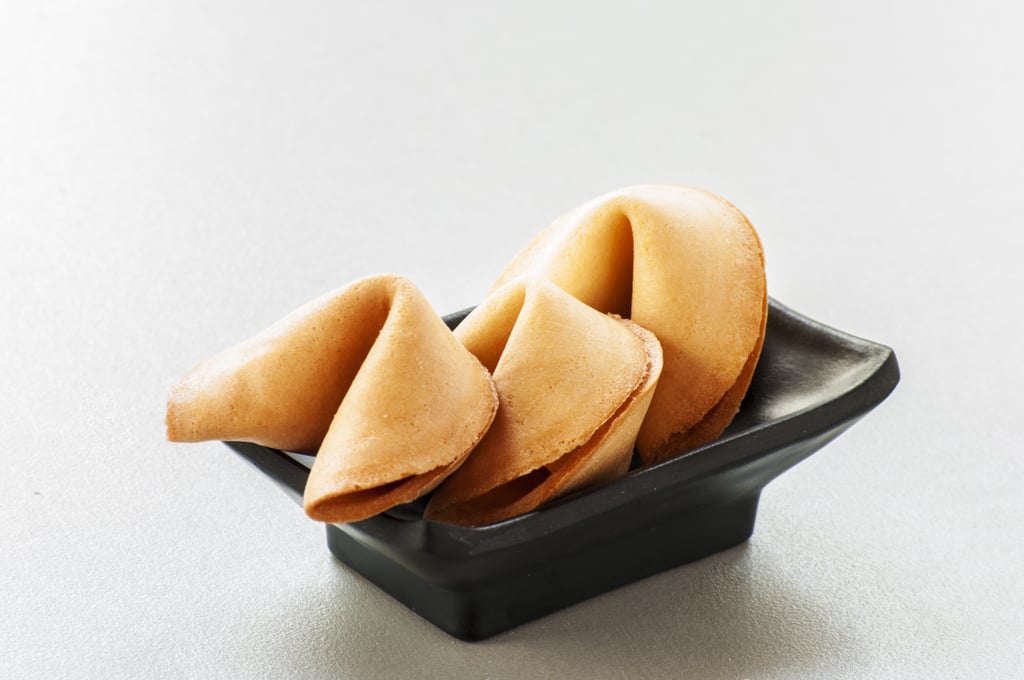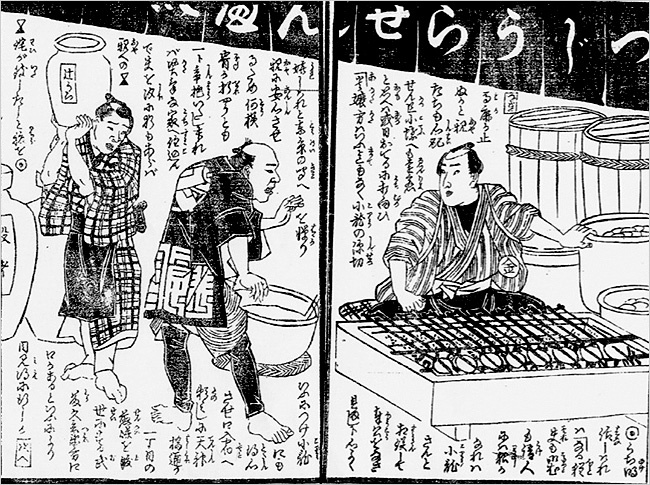This question [1] originally appeared on Quora [2]: what is the origin of the fortune cookie? [3]
Answer [4] by Jennifer 8. Lee [5], former reporter for The New York Times and author of The Fortune Cookie Chronicles, on Quora [6].

Source: Shutterstock [7]
Evidence points to fortune cookies originating in Japan — not China nor the United States. Here is a New York Times article [8] I wrote about the case for Japanese origins in 2008 that preceded my book, The Fortune Cookie Chronicles.
Here is a look at real Japanese fortune cookies:
In Japan, the cookies are known variously as tsujiura senbei ("fortune crackers"), omikuji senbei ("written fortune crackers"), and suzu senbei ("bell crackers"). They are relatively niche, nowhere near the popularity they enjoy in the United States. Unlike American fortune cookies they are flavored with miso and sesame, and thus have much nuttier flavor than in those vanilla-butter ones in the United States.
Today in Kyoto you still can see small family-run bakeries outside the Fushimi Inari Shrine making the fortune cookies by hand. If you go see them, the family resemblance is pretty strong. It's totally cool. They make then with small grills called kata.
A Japanese scholar I found, Yasuko Nakamachi, was arguably the first person to make the case that the fortune cookies are from Japan. Her prime pieces of evidence are the Kyoto generations-old small family bakeries making obscure fortune cookie-shaped crackers. She has also turned up many references to the cookies in Japanese literature and history, including an 1878 image of a man making them in a bakery — decades before the first reports of American fortune cookies.
Here is the 1878 image:

So if fortune cookies are Japanese, how did they get associated with Chinese restaurants?
Well, turns out the fortune cookie's path is relatively easy to trace back to World War II. At that time they were a regional specialty, served in California Chinese restaurants, where they were known as "fortune tea cakes." There they were encountered by military personnel on the way back from the Pacific Theater. When the veterans returned home, they would ask their local Chinese restaurants why they didn't serve authentic fortune cookies as the San Francisco restaurants did.
So the restaurants inquired west, and the cookies rapidly spread across the country. By the late 1950s, an estimated 250 million fortune cookies were being produced each year by dozens of small Chinese bakeries and fortune cookie companies. One of the larger outfits was Lotus Fortune in San Francisco, whose founder, Edward Louie, invented an automatic fortune cookie machine. By 1960, fortune cookies had become such a mainstay of American culture that they were used in two presidential campaigns: Adlai Stevenson's and Stuart Symington's.
A number of immigrant families in California, mostly Japanese, have laid claim to introducing or popularizing the fortune cookie prior to World War I. Among them are the descendants of Makoto Hagiwara, a Japanese immigrant who oversaw the Japanese Tea Garden built in San Francisco's Golden Gate Park in the 1890s. Another one is Fugetsudo in Los Angeles. Last year, some of the kata grills from Benkyodo were donated to the Smithsonian [9] as part of Asian American collection.
So that period between World War I and World War II is murky.
This we know: during the 1920s and 1930s, many Japanese immigrants in California owned chop suey restaurants, which served Americanized Chinese cuisine. And early on, Chinese-owned restaurants discovered the cookies, too. But they were focused mostly in San Francisco, though with some evidence of the cookies being served in New York.
So what happened between World War I and World War II? Basically Franklin Delano Roosevelt's executive order 9066 [10], which rounded up the Japanese-Americans into internment camps, including those that made fortune cookies.
As far as we can tell, during that period, the Chinese basically moved in on manufacturing the cookies, and by the end of World War II, they were known as Chinese fortune tea cakes. And they were made at scale.
So I like to say fortune cookies were invented by the Japanese, popularized by the Chinese and ultimately consumed by Americans.
If you want to see Chinese being confused by fortune cookies, I took a bunch of the cookies back to China and gave them out. Here is their reaction.
Small but little known fact. David Lee of SV Angel's father (who is Korean American) made the first fully automated fortune cookies machines in America.
The best answer to any question. Ask a question, get a great answer. Learn from experts and access insider knowledge. You can follow Quora on Twitter, Facebook, and Google+. Here are more questions:
Which Wines Go Best With Chinese Food? [11]
Are There Any Illegal Foods? [12]
Is Kosher Food Better? [13]
What Do People Eat For Breakfast Outside of the US? [14]